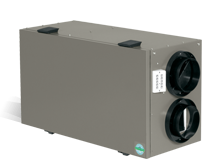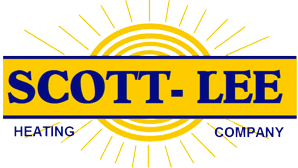St. Louis Energy Recovery Ventilator Installation
 This is a device that brings fresh outdoor air into your homes environment, while removing stale and humid air. These systems are usually needed on newer, tightly sealed and heavily insulated homes to ensure good indoor air quality.
This is a device that brings fresh outdoor air into your homes environment, while removing stale and humid air. These systems are usually needed on newer, tightly sealed and heavily insulated homes to ensure good indoor air quality.
Breathing Fresh Indoor Air in St. Louis, MO
Imagine stepping into your home after a long day, taking a deep breath, and feeling a rush of fresh, invigorating air fill your lungs. It’s a simple pleasure that many of us take for granted. However, ensuring the quality of the air we breathe indoors is crucial for our health and well-being. This is where (ERV) energy recovery ventilators come into play.
(ERV) Energy Recovery Ventilators: A Breath of Fresh Air
(ERV) energy recovery ventilators are sophisticated systems designed to provide a continuous supply of fresh air while effectively managing energy efficiency. These ventilation systems play a pivotal role in maintaining optimal indoor air quality, particularly in tightly sealed buildings or homes with limited natural ventilation.
ERV systems achieve this by recovering heat or coolness from the outgoing stale air and transferring it to the incoming fresh air. Not only do they provide fresh air, but they also help regulate temperature and humidity levels, resulting in a comfortable living environment.
Why St. Louis Residents Demand Indoor Air Quality
Good indoor air quality is essential for a healthy and comfortable living space. Poor air quality can lead to a range of health issues, including allergies, respiratory problems, and reduced productivity. With the increasing emphasis on energy efficiency and airtight construction, it’s crucial to introduce effective ventilation systems like (ERV) energy recovery ventilators to ensure proper air circulation.
The Dangers of Indoor Air Pollution
Indoor air pollution is a prevalent issue that often goes unnoticed. Various factors contribute to poor indoor air quality, such as volatile organic compounds (VOCs) released from building materials, cleaning products, and even furniture. Inadequate ventilation exacerbates the problem, trapping pollutants inside and compromising the health and well-being of occupants.
Research has shown that indoor air can be up to five times more polluted than outdoor air. Considering the significant amount of time we spend indoors, it’s imperative to take measures to improve indoor air quality. This is where (ERV) energy recovery ventilators prove their worth.
How Do (ERV) Energy Recovery Ventilators Work?
Understanding the inner workings of (ERV) energy recovery ventilators helps us grasp their significance and how they contribute to fresh and healthy indoor environments.
The Heat and Energy Exchange Process
ERV systems utilize a core mechanism that enables the exchange of heat and energy between outgoing and incoming air streams. This core is typically made of a heat exchanger material, such as a heat recovery wheel or a plate exchanger.
Heat Recovery Wheel:
A heat recovery wheel, also known as a Rotary Heat Exchanger, is a popular component in (ERV) energy recovery ventilators. It consists of a rotating wheel with a honeycomb-like structure that alternately passes through the incoming and outgoing air streams. As the wheel rotates, heat is transferred from the outgoing air to the wheel and then to the incoming air, resulting in heat recovery.
Plate Exchanger:
An alternative to the heat recovery wheel is a plate exchanger. This system employs a series of plates, often made of aluminum or plastic, with small channels. These plates enable the transfer of heat and energy from one air stream to another. Plate exchangers are compact and efficient, making them a suitable choice for various ventilation applications.
ERV Functions: Beyond Fresh Air
While the primary function of (ERV) energy recovery ventilators is to supply fresh air and maintain indoor air quality, they offer additional benefits that enhance overall comfort and energy efficiency.
1. Temperature Regulation
In addition to supplying fresh air, (ERV) energy recovery ventilators help regulate indoor temperature. During the heat exchange process, the incoming air is pre-conditioned to match the temperature of the outgoing air. This ensures a consistent and comfortable indoor climate, reducing the reliance on additional heating or cooling systems.
2. Humidity Control
Controlling indoor humidity levels is crucial for maintaining a comfortable living space. High humidity can lead to mold growth and discomfort, while low humidity can cause dry skin, respiratory issues, and static electricity. (ERV) energy recovery ventilators help balance indoor humidity by transferring moisture from the more humid air stream to the drier air stream.
3. Energy Efficiency
Energy efficiency is a significant concern for homeowners and building operators. By recovering heat or coolness from the outgoing air, (ERV) energy recovery ventilators reduce the load on heating and cooling systems, ultimately lowering energy consumption. This not only benefits the environment but also translates into cost savings on utility bills.
St. Louis Area Installation of (ERV) Energy Recovery Ventilators
Installing (ERV) energy recovery ventilators requires careful consideration and planning to ensure optimal performance and efficiency. It’s essential to consult professionals who specialize in ventilation systems to determine the best approach for your specific requirements.
Professional Assessment
: Before installing an (ERV) energy recovery ventilator, a professional assessment of your building or home is necessary. This assessment takes into account factors such as building size, occupancy, ventilation requirements, and climatic conditions to determine the appropriate system capacity.
Ductwork Design:
Proper ductwork design is crucial for efficient and balanced airflow throughout the building. A well-designed ductwork system ensures that fresh air is distributed evenly and effectively, enhancing indoor air quality.
Positioning and Vent Placement:
The positioning of (ERV) energy recovery ventilators and vent placement plays a vital role in achieving optimal performance. Professionals consider factors such as air intake locations, proximity to potential pollutants, and aesthetics to determine the best locations for the system and vents.
Regular Maintenance: Once the (ERV) energy recovery ventilator is installed, regular maintenance is essential to ensure its long-term efficiency and performance. This includes filter replacement, cleaning of heat exchanger components, and periodic inspections by professionals.
Frequently Asked Questions about (ERV) Energy Recovery Ventilators
Q1: How long do (ERV) energy recovery ventilators last?
(A) Energy recovery ventilators typically have a lifespan of 15 to 20 years, depending on factors such as usage, maintenance, and environmental conditions. Regular maintenance and proper care can help extend the lifespan of these systems.
Q2: Can (ERV) energy recovery ventilators be installed in existing homes?
(A) Yes, (ERV) energy recovery ventilators can be installed in existing homes. However, the installation process may vary depending on the layout and structure of the home. Consulting a professional ventilation specialist is recommended to ensure proper installation.
Q3: Are (ERV) energy recovery ventilators noisy?
(A) (ERV) energy recovery ventilators are designed to operate quietly, ensuring minimal disturbance to occupants. However, the noise level can vary depending on the specific model and installation. It’s advisable to choose reputable brands and consult professionals for guidance on selecting a suitable, quiet system.
Q4: Can (ERV) energy recovery ventilators help with reducing odors?
(A) Yes, (ERV) energy recovery ventilators can help reduce odors by continuously supplying fresh outdoor air and exhausting stale indoor air. This process helps remove odorous particles and pollutants, contributing to a more pleasant and odor-free indoor environment.
Q5: Do (ERV) energy recovery ventilators require regular maintenance?
(A) Yes, like any mechanical system, (ERV) energy recovery ventilators require regular maintenance to ensure optimal performance. This includes cleaning or replacing filters, inspecting and cleaning heat exchanger components, and checking the overall system for any issues.
Q6: Are (ERV) energy recovery ventilators suitable for all climates?
(A) Yes, (ERV) energy recovery ventilators are designed to be suitable for a wide range of climates. They can effectively recover heat or coolness from the outgoing air, ensuring that the incoming air is pre-conditioned to match the desired indoor temperature, regardless of the external climate conditions.
Breathing Easier with (ERV) Energy Recovery Ventilators
Achieving fresh, clean, and healthy indoor air is a priority for every homeowner and building operator. (ERV) energy recovery ventilators offer an effective solution to combat poor indoor air quality by continuously supplying fresh air while recovering energy from the outgoing air. With their ability to regulate temperature, control humidity, and enhance energy efficiency, these systems provide a comprehensive approach to ventilation.
Investing in (ERV) energy recovery ventilators not only improves the quality of the air we breathe but also contributes to a comfortable and energy-efficient living space. Consult professionals in the field to determine the best (ERV) energy recovery ventilator for your specific needs and enjoy the benefits of fresh indoor air for years to come.
Using the fresh air from outside, an ERV system balances the humidity levels inside your home, with little or no energy loss. They are designed to provide comfort in warmer, more humid climates.
ERV Products:
- Lennox Healthy Climate ERV
- Aprilaire 8100 ERV
Contact Scott-Lee Heating today to find out more about Energy Recovery Ventilators. We will help you determine which system suits your needs and fits your budget. Call us at (314) 756-9444 for a free consultation.
